Solidago caesia
A wand-like goldenrod with tufts of yellow flowerheads spaced along the stem
Solidago caesia wreath goldenrod
Add to MyPlants View Locations
Most familiar goldenrods are tall plants of the fields and meadows with large showy flower clusters. This native species of goldenrod, however, is quite different and interesting. It is one of the slender, wand-like goldenrods. There are tufts of yellow ¼-inch flower heads spaced along the stem in the axils of the leaves, sometimes with a small flower cluster at the end of the stem. There are 3-5 ray florets per flower head.
The leaves are slender and sparsely toothed and about 2 ½ to 5 inches long. There is a strong central leaf vein and fainter lateral veins. There is no leaf petiole. The stem is smooth and often, but not always, bluish or purplish in color. Younger stems are green. The stem is also covered with a whitish powder. Often the bluestem goldenrod is found growing horizontally to the ground or bending over in an arch. This species grows only 1-3 feet tall and is found in woodlands and thickets, where it tolerates shade or partial shade. In this manner, it is different than the other sun-loving goldenrod species. Thus look down to the side of your woodland trails to see this species.
The bluestem goldenrod is found throughout the eastern part of North America where conditions are suitable. It is documented in almost all of the counties of Pennsylvania. The blooming period is August to October. It is sometimes called the wreath goldenrod because the long flowering stem can be formed into a wreath.
Habitat & Range
Found in rich woods and is common.
Present throughout the state.
Range: Throughout the eastern part of North America.
| EMP: | FACU |
|---|---|
| NCNE: | FACU |
Phenology
Flowers August to late October.
Characteristics
Stem slender, smooth and purplish.
Flowers scattered, yellow clusters in leaf axils and large terminal cluster.
Plant Codes
S-rank: S5 (Secure)
G-rank: G5 (Secure)
Solidago caesia wreath goldenrod
Synonyms: Solidago caesia var. caesiaAdd to MyPlants View Locations
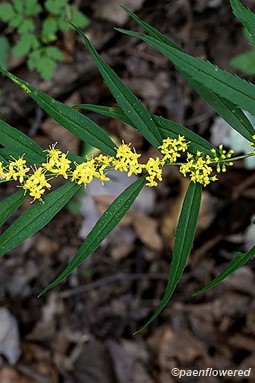
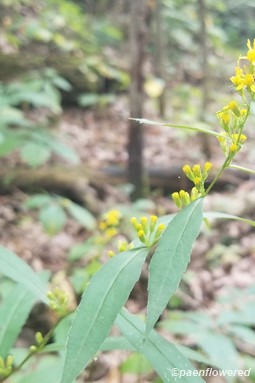
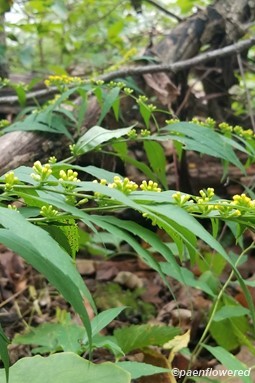
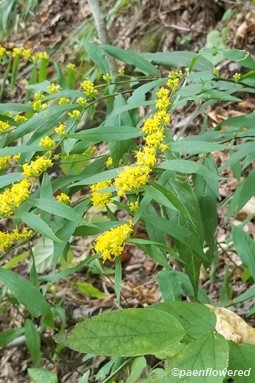

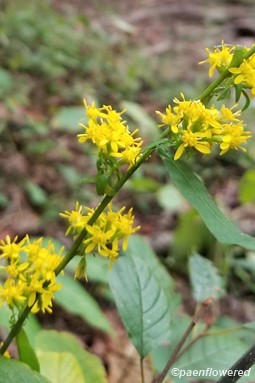











Comments
Have you spotted this plant in your area? We'd love to hear about your experience! Share your comments or questions about the plant below. Comments are moderated before posting.